Aesyn Cravery's Blog, page 3
December 30, 2023
Updates and a New Cover
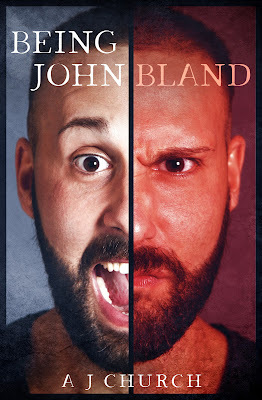
I recently had the cover updated for my first novel, Bring John Bland, by the fine folks at Getcovers. I figured after 19 years (2005--has it really been that long?), it was overdue for a change.
As far as other news, I finished RELEASE, Book 5 of The Sacrifice, and will start edits after the new year with the intention of publishing in January 2024.
I've also started work on a new project, a dark fantasy novella entitled Incubus. Stay tuned for news on that.
November 25, 2023
Book Trailer for A Legacy in Blood
Was just tooling around waiting for the turkey to cook Thanksgiving day and created this trailer. For full size, view on YouTube.
November 20, 2023
A Legacy in Blood Released
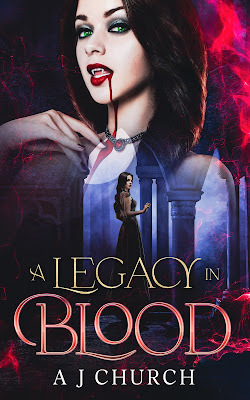
JUST RELEASED!
A Legacy in Blood, an old-fashioned, gothic vampire tale in the vein of Anne Rice, meandering through multiple timelines and generations of the Castillo family.
A curse uttered generations ago on a rain swept Spanishhillside hangs over the life of Kira Castillo, and there is nothing she oranyone else can do to change it.
As an only child, Kira had always known she was the lasthope to carry on her family’s legacy. An arranged marriage to a man she did notlove sought to secure that legacy, but fate had other plans. Kira’s life wasupended the night she was to become Eduardo Lopez’s bride, and for her, nothingwould ever be the same. A mysterious face in the crowd, a terrifying ritual atthe hands of a voodoo king, and a tragic tryst with a childhood love would shapethe woman she was to become.
Now she must cross oceans and time to save her family againand again, always arriving at the eleventh hour while fighting to contain thedeadly secret that torments her nights.
Available on Amazon for kindle and paperback. Read for free on Kindle Unlimited. A free excerpt is available on my Random Sh!t Nobody Cares About website.
November 9, 2023
So You Want To Be A Writer - Part 2
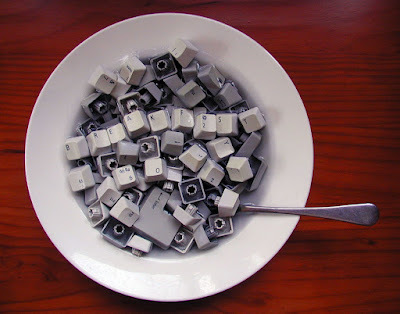
10 Steps To Go FromFirst Draft To Publishable Novel
(See Part 1 here)
If you’ve been working on your novel and have it sitting at roughly80,000 to 100,000 words, good job. Pat yourself on the back and bask in themoment, but don’t go so far as celebrating, because as the man said, “We ain’tdone yet.”
See, what you are holding in your hand (or on your computer)is something probably no one but you will ever see (and trust me, when you’refinally done, you’ll be grateful for that). Given the choice, no writer wouldever want someone else to read their first draft. I know mine have almost asmany instructions and notes to myself in them as narrative. Fill this out more,find out what this means, add a little more padding to this scene…you get thepoint. The purpose of a first draft is to get the whole story down, from startto finish. Think of it as a skeleton, and the rewrites you’re going to do asadding lean meat to the bones. A book may take months (and for somepeople, years) to finish, and getting to the first draft is a very small partof that effort. The hard work comes after, and it’s the stuff that separatesthe wannabes from the real writers.
1. Stop Writing. Depending on how much of a controlfreak you are, this may or not be the easiest thing you=vedone yet. AWhat doyou mean, stop writing?@you ask. Simple. Close the file (or put away that giant stack of dead trees youcall a manuscript) and forget about it for a week or two. Take a vacation.Clean out the garage. Better yet, start another book. The point is, you=ve been living with this book forseveral weeks or months (or for some of you, years) and during that time it hasconsumed every last drop of your creative juices. You need time to recharge thebatteries and distance to gain perspective. You know that old saying, AYou can=tsee the forest for the trees?@Well, this is where it came from. (Okay, maybe that=snot entirely true, but itapplies.)
2. Rewriting, Round 1. If the Round 1 part ofthis title scares you, you=regoing to either need to get tougher or pack up and go home. Most books requireat least two, many times more rewrites. The most important job of this round isto fill in the blanks (all those little notes you made to yourself whilewriting), round out your research, eliminate the typos and grammar gremlins,and tighten the writing. Some scenes may require more detail, some may requireless, and some may need to be eliminated altogether. Remember, if it isn=t contributing to the resolution of thestory, it isn=tnecessary. It=s okay tothrow in the occasional red herring, but do that too much and what you see as astorytelling device becomes a reader=smotive for murder. (Quick word of advice here: Don=tpiss off your reader. It hurts future sales.)
WARNING: This round of rewrites can also become a trap,especially for new writers. You can get so mired in rewriting and researchingthat you burn out on the entire novel and never touch it again. So make thispass quick. Allot yourself a predetermined amount of time for completion (say aweek, or if you=re busyor work slowly, two) and stick to that schedule. Dragging it out for weeks oreven months isn=t goingto make the book any better.
3. Let Sleeping Dogs Lie. Every writer has his or herown system for doing things, and as you become more experienced, you=ll develop yours as well. Today,however, is not that day. If you=rereading this, it=s becauseyou=re not there yet. So, take my advicefor what it=s worth,and step away from the book again. Believe it or not, even if you=re not actively working on it, yourlittle literary masterpiece-to-be is still happily percolating away on the backburner of your brain. There might be a scene you=renot happy with, or a plot hole you can=tfigure out how to fill. The fact is, at this point, you=veprobably got as many questions as you have answers and while banging your headagainst a keyboard might provide a warped brand of satisfaction, it probablywon=t do much more than give you a headachethat you can then blame on your writing, thus providing you with the excuse youneed to throw in the towel.
Think of it this way: You know those times when you=re having a conversation with a friendand something they say reminds you of a movie you saw a long time ago (or maybelast week), but you can=tfor the life of you remember the name of the movie? It=slike staring into a black hole. You know you know it, but that portion of yourinternal hard drive has just taken a vacation to the Bahamas and is unavailablefor access. Then sometime in the middle of the night, lo and behold, the harddrive comes back online and wakes you up with–you guessed it–the name of themovie you forgot. You sit up in bed and yell, AEureka!@ and curse the Gods of Internal HardDrives for their untimely interruption of your sleep, or something like that.
So what does this mean to you, the writer? Allow your noveltime to breathe, to smooth out the rough edges. Fiddling with it during thistime, changing this word or that, really isn=tgoing to speed the process. You never know; by waiting you might get struckwith an epiphany that turns your ho-hum first novel into a best seller.
4. Rewriting, Round 2. This time when you come backto your book, do yourself a favor. If you can, print it out. Reading it onpaper forces you to read without editing. Plus, once that read-through isfinished, it will be easier to take notes on paper. If you can=t print it out, convert it to PDF soyou=re forced to read it through frombeginning to end without stopping to edit.
The reason for a complete read-through is important for youto get a real sense of the overall book, something that isn=t possible when you work on it one partat a time. It is only by looking at it as a whole that you get a real sense ofthe plot, pacing, and what I call readability of the novel. You can take notesduring this read-through, but don=tlet it sidetrack you. You need this perspective. I often trick myself bypretending I=m astranger reading the book. You can use whatever works for you.
Once you=refinished, you can go back and begin to polish your little jewel with a greaterunderstanding of what it needs or could stand to lose. Be merciless–the changesyou make now will make your novel stronger for what=scoming next.
5. Beta Read. By now you=refeeling pretty confident about your book. You=veironed out all the obvious plot holes, tightened up the narrative, and cleanedup the typos and grammar problems.
Which means it is now time for a second opinion. If you=ve never had anyone else read your work(friends and family don=tcount because they=ll saythey love anything you write to spare your feelings, and that won=t do you or your future readers anygood), this can be a scary proposition. Unfortunately, you=re going to have to get over your fearor you=re nevergoing to be able to release your baby into the wild.
The choice of a beta reader is important. Good beta readersare worth their weight in gold to a writer, and having several is vital becauseyou=re going to want at least two differentbeta reads; one now and one just before release. Having several readers foreach ensures you get a good cross-section of feedback, but don=t use all of them the first timearound. Remember, you only get one chance to make a first impression, so thereader(s) who look at your book this time should not be the same one(s) wholook at it the final time. You can=tgive an accurate assessment of something when you already know what=s going to happen.
The most important qualification for a beta reader ishonesty. No matter how brutal it may seem, make sure your readers are willingto give you an impartial, no-holds-barred assessment of the book. And that=s where the next step comes into play.
6. Critique Etiquette. If you=regoing to be a professional writer, you have to learn to take criticismconstructively. Remember, your beta readers are critiquing this particularbook, not you personally or your overall ability to write. You can either sulkand get angry, or you can use their comments constructively to make your bookbetter so when you do release it, you=llknow it=s thebest book you could have written. If you=relooking for an ego-stroke, find another way to express yourself.
7. Apply What You=veLearned. Once you get all the comments from your beta readers, go throughthem objectively. You have to be able to take a step back at this point andlook at the book like any other work you do. If you were building a house andthe doors were crooked, you=dwant someone to point that out to you before you had prospective buyers come byto look at it, right? Same thing here. Take all their comments and compare themto each other and to your book. Some comments may be valid, and some you mayreject. But don=t rejectthe reason the comment was made, especially if more than one person makes it.Perhaps your readers don=tunderstand a particular point you=retrying to make in the book and suggest a way to clarify it. You may not agreewith their solution, but don=tdiscount the comment itself. Just because you know what you=re trying to say, doesn=t mean your readers will. Ifclarification is required, it=sbetter to address it now.
8. Editing. Remember that forest and trees comparisonwe made in Number 1? It=smore important than ever now. When you live with a book for so long, you beginto see it, not for what it is, but what you think it is. Mistakes thatwould be obvious in someone else=swork are completely invisible in your own. It=snot that you=re bad atediting, it=s justthat your brain sees what you want it to see.
You may or may not be good at editing. If you=re not, finding a good editor is evenmore important than a good beta reader. And there=sno such thing as a one-size-fits-all editor. Different writers need differentkinds of editors, and some may need more than one. You may be good at thegrammar and punctuation stuff, but blind to content and pacing. Or maybe you=re just the opposite. The point is,take your time to find an editor that fits your needs and develop arelationship with them. That way they learn your strengths and weaknesses andcan edit accordingly.
If you are good at editing, it=sstill wise to get a second pair of eyes on your book, if for no other reasonthan to make sure you don=tmiss something. If you can=tafford to pay an editor, try to work out some sort of reciprocal agreement.Maybe you know a writer who=sgood at content editing and you=regood at line editing. You could swap services, thus helping each other out andbuilding a report with a fellow writer.
9. Polish and Proof. We=regetting so close you can almost taste it now, but let=snot rush things. The time you spend on details now will reward you with abetter product later. After you incorporate your editor=sinputs, you need to once again put the book aside and let it rest. This time Iwould suggest giving it a couple of weeks. I know you=reanxious to set it free, but just be patient a little while longer. You mightwant to start lining up publication options, maybe finalizing your cover ideas orother details. You could also start talking up your book on social media,getting some pre-release buzz going.
Once you=vegotten some distance from the book, do another read through like you did inNumber 4. If you=ve doneyour job, there should be little if anything to change or correct. Make thosechanges, give it another polish, and prepare to send it out for its finalreview.
10. Final Beta Read. This is it. The final test. Whatyou give your beta readers to read this time should be 99% ready forpublication. I say 99% because finding a flaw or two is not the end of theworld. If they find nothing, congratulate yourself on a job well done. And ifyou run into the opposite scenario and your beta readers still uncoverproblems, don=t getdiscouraged. Remember, it=sbetter to learn about any problems now rather than after you publish and get aspate of bad reviews. Just remember to be patient and thank them for their timeand honesty. Every problem you catch now is one a paying customer won=t catch later.
And that=sit. Remember back in part 1 when I said writing was hard work? Well, now youknow exactly what I was talking about. But you got through it, and now you canfinally pop the cork on that champagne and have a little celebration. But justa little one.
See, your book is finished, but you’re not ready forpublication yet. If you’re going the traditional route, you’ll have to startputting together a synopsis and query letter to find an agent, and that’s awhole other process. Check Query Tracker for agents who specialize in your genre. If you do decide to go the traditionalroute, you may dispense with the expense of paying an editor to go through yourbook, since most publishing houses have their own internal editors, but youstill want to submit the best version of your book for consideration.
If you decide to go indie and publish yourself, you’ll need toformat your book. Read through my post on Formatting A Word Document for Publication on Amazon for some tips.
As far as the other aspects of self-publishing, you’ll needa cover–a professional cover is worth its weight in gold to give your book itsbest start in life. Covers don’t need to break the bank. You can get a goodcover on a budget by checking out some of the artists on Fiverr or a companylike Getcovers.com. And last but not least, you’ll need to write a blurb to useas your back cover copy and your book description on Amazon or wherever elseyou plan to sell it. Remember, A BLURB IS NOT A SUMMARY. It’s marketing copy,150 to 200 words, three short paragraphs of succinct, punchy, attention-gettingadvertisement. Think of it like a move trailer, just hitting the highlights. Ihighly recommend you check out FictionBlurbs, the Best Page Forward Way by Pheobe J. Ravencraft and Bryan Cohen. Greatstep-by-step advice for writing a blurb that will get your book the attention itdeserves.
Once you’ve accomplished all that, NOW you’re done.
If you would like a pdf copy of this post, please post a request in the comments section and I will be happy to send it to you.
November 8, 2023
So You Want To Be A Writer - Part 1
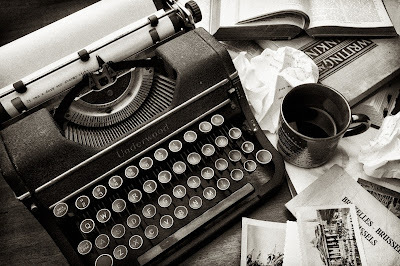
13 Tips for Writing a First Draft Novel
I spent 30 years as a technical and copy writer and editor. I’vealso written and published nine books, with two more ready to go before the endof the year. During that time I learned a lot about the business of writing,enough that I could share my wisdom with others. I’ve taught creative writingclasses at a community center and heard the same questions from aspiringwriters. The following is Part 1 of my series to answer those questions.
1.Rule Number 1should come etched in stone with heralds singing from the mountaintops. Thebasis for all writing, regardless of genre, category, or audience, comes downto one simple thing–the ability to create a cogent sentence. Without that, toquote author Chuck Wendig, you’re fucked.
At the risk of dating myself, when I was a kid (which, bythe way, is my own kids’ least favorite opening to a sentence) we had to learnto diagram sentences in English class. It was boring. It was tedious. It waslike pulling teeth without Novocain.
It was also BRILLIANT. They don’t teach that in schoolstoday. Know how I know that? Because if they did, more people would know thebasic rules of grammar and how they apply to putting together a sentence thatactually says what you want it to say. At the risk of sounding like you mother’sgrammar school teacher, here’s a quick remedial lesson in grammar usage:
A. Subject-VerbAgreement. This is it–Newton’s Law of Sentence Structure. Learn it, own it,use it. Certain subjects go with certain types of verbs. For example, he/she/it(third person singular) requires a present tense verb that ends in s.Example: He understands, she learns, it does.
Subjects that are not third person singular (they/we/I/you)require a present tense verb that does not end in s. Example: I know, wewalk, they see, you learn.
Naturally, this rule only applies for action occurring inpresent tense, which leads to…
B. Know Your Tenses. Past,present, future. Past tense: she walked, he saw, we ran. Present tense wecovered in A. Future tense: We will walk, she will learn, I will win.
C. The MisplacedModifier. Example, the infamous “Throw Momma from the train a kiss”sentence. When starting a sentence with a verb, place the subject immediately(or as close to immediately as possible) after the verb. What are we throwingfrom the train–Momma or the kiss? Correct: “Throw a kiss to Momma from thetrain.”
D. The DanglingParticiple. This has to be the number one most abused grammar rule andinvolves adjectives ending in ing and ed. A participle is a verbthat modifies a noun or, as we say in grammar-speak, an antecedent. Thedangling part comes when there’s no clear antecedent for the participle. Forinstance, take the sentence: After being whipped fiercely, the cook boiled theegg. What is being whipped, the cook or the egg? The way the sentence iswritten, it isn’t clear. The word whipped in this sentence is a danglingparticiple. Correct: The cook fiercely whipped the egg before boiling it.(Better would be leaving out the adverb fiercely altogether.)
2. Pronoun Referents.First of all, you do know what a pronoun is, right? A word used in place of oras a substitute for a personal noun. He/him, she/her, who/whom, it/its,they/them/their. The simple definition of a pronoun referent is the noun towhich the pronoun is referring. Take this sentence: “Sparta attacked Athens andthey won.” Who is they? Sparta and Athens are cities, not people. Thepronoun they refers to people, plural. So the correct form of thesentence should be “The Spartans attacked Athens and they won.”
3. Adverbs. Onesimple rule: If you want your writing to be strong, don=tuse them. Weak: He walked quickly. Strong: He raced. Don’t know the right word?Get a thesaurus. Or use one online.
4. Adjectives: (see 3). Use as a few as possible to get your point across. If you need a lot ofadjectives to describe your noun, find a better noun.
5. Prepositions andPrepositional Phrases. A preposition is a word that links nouns, pronouns,and phrases to other words in a sentence (example: on, about, after, beneath,against, over, under, during, with, without, beyond, but, by, except, for,from, of, in, out, since, beside, etc.). A prepositional phrase is comprised ofa preposition, its object, and any associated adjectives or adverbs, and canfunction as a noun, an adjective, or an adverb. Example: “The children climbedthe mountain without fear.” In this sentence, without fear is aprepositional phrase.
The most well-known rule involving prepositions is never enda sentence with one, which, depending on the sentence, can create a correctsentence that is even more awkward than the one you are correcting. Therefore,if you find yourself facing this conundrum, just rewrite the sentence to avoidthe entire situation. And if you can’t do that, go back to START, do notcollect $200.00.
6. Punctuation. Learn to usepunctuation correctly. We used to have a saying among technical editors:don’t make your writing look like someone used a comma shaker over it. Itamazes me how one little curlicue can be so severely misused. There are onlytwo uses for a comma: to separate items in a list, or to indicate a naturalpause. Taking the first part of that statement, there are two schools ofthought on the correct way to structure a comma-separated list: the Oxford orserial comma, and the AP Stylebook comma. Let’s take Oxford comma first. Takethis sentence: “Jane had an apple, an orange, and a banana in her lunchbox.”The comma before the and is what is referred to as an Oxford comma.According to the AP Stylebook, however, the comma before the and (or theor) in a list is understood and therefore unnecessary.
Now, I don’t care to which school of thought you subscribe.Personally, I like the Oxford comma. It’s familiar and cozy and appeals to myorderly sensitivities. The important thing is to know the difference and use itconsistently. If you use it one way once, use it that way all the time. Nowaffling back and forth. Legal documents prefer the Oxford comma to remove alldoubt as to what that and or or is joining. I leave it to you todecide.
The natural pause comma, however (and see what I just didthere?), is less contentious. Here’s an easy way around it. Say the sentencealoud. Wherever you naturally pause, place a comma. If you don’t pause, don’tplace a comma. Simple. Move on.
Semi-colons and em dashes. Semi-colons are used to join twoor more sentence fragments. What is a sentence fragment? A phrase that cannotstand alone as a sentence (i.e., it does not contain a subject and a verb). Andlength has nothing to do with it: “He ran.” is a complete sentence. Semi-colonsare NOT used like serial commas to separate items in a list.
Em dashes are used similarly. I like to think of them as aless formal colon. You rarely see colons used in fiction, but em dashes are allover the place. I use the hell out of them myself and love them.
7. Know the Rules.You have to learn the rules before you can break the rules. I=ve heard newbie writers say this allthe time–“I don’t have to follow the rules. I’m creating my own voice.” That’ssweet and all that, but don’t use it as an excuse for not learning how to do itright. How do you know you’re breaking the rules if you don’t bother to knowwhat they are?
8. Voice. Useactive as opposed to passive voice in your writing. This is the key tocompelling writing. Passive voice is weak and wishy washy. Active voice isdecisive and in control. Passive sentences often use words like was and isto describe action. Example: The party was attended by ten guests. Active: Tenguests attended the party. Own it, write it.
9. Dialogue. Thisshould be easy for writers, and yet I can’t tell you how many times I readstories where the dialogue is wooden or forced. Listen to how people talk. Youhave conversations, or have heard conversations (hopefully). You watch TV andmovies, listen to the radio, play video games. You KNOW how people talk. Usethat. Say the sentence out loud. Hell, act it out loud. If it sounds off orwooden or forced, rewrite it. Have a friend run the lines of your dialogue withyou. Dialogue is meant to be spoken, so speak it. And for God’s sake, don’tmake everyone sound the same. Little Janie might talk with a Southern accent.Martha might be old-fashioned and proper, never using contractions or cursewords. Bobby might be a foul-mouthed mafia hitman from Brooklyn. Each has hisor her own voice. Learn it and use it.
And while we’re at it, learn to write dialogue correctly. Quotation marks are for dialogue. Each line of dialogue should becontained within them, along with any punctuation (periods, commas, questionmarks, exclamation marks). Each new speaker in a dialogue should begin on a newline. If a speaker’s line spans more than a paragraph, the ending quotationmark is not necessary, however, the beginning one for the next paragraph is inorder to identify it as dialogue.
While on the subject of dialogue, don’t overuse dialoguetags. He said, she said, etc. If there are two people speaking, you canprobably get away with dispensing with tags altogether. If it’s a long span ofdialogue, throw one in now and then to clarify.
And speaking of tags, you don’t necessarily need the hesaid/she said to indicate who’s speaking. You might just describe an action.Example: Robert rubbed his chin. “Okay, you’re right.” There’s no dialogue tagnecessarily because we know Robert is the one talking. Nothing makes writingsound more amateurish than a dialogue tag on every sentence.
10. Exclamationpoints. I keep this one standalone because it’s a pet peeve of mine. Simplerule: don’t use them unless absolutely, positively necessary, and ONLY fordialogue. Yeah, maybe you like sprinkling them in your tweets or Facebookposts, but this is literature, and everyone isn’t screaming with glee or terroron every line. The occasional “Look out!” is okay, but I have seen writersstick them on the end of perfectly innocuous sentences that have nothing to dowith dialogue. In fact, I recently started reading a book in which everysentence on the first page ended in an exclamation point. Needless to say, thefirst page was as far as I got. You want to encourage readers, not piss themoff.
11. Tense. Thismight sound obvious, but I can’t tell you how many times I see, when editing abook, a writer jumping between past tense, past perfect tense, present tense,hell, even future tense. The majority of books are written in past tense, as ifthe action has already happened. If you want to amp up your writing (this isespecially effective in urban fantasy and action/adventure-related books) writein present tense. It takes a little more concentration, but the effect is worthit. The point is, however, whatever you do, chose one and stick to it.
12. Point of View.First person, second person (rare), third person limited, third personomniscient are all forms of point of view employed in fiction. Writing in firstperson is very popular right now. It gives the reader a greater sense of thestory and gets them more involved, particularly in the narrator’s mind(usually, but not always, the protagonist of the book). The problem is, theaction is limited to what the narrator can personally experience or is told.And if you have an unreliable narrator, the plot, as they say, thickens deliciously.
Third person offers greater freedom in telling the story butthe trade-off is a watering-down of the readers’ involvement in the story. Mostthird person books are written in third person limited, which means that whileit is third person, the point of view is limited to the thoughts of only onecharacter in a particular scene, chapter, or even the whole book. The biggestmistake in this instance is switching between viewpoints within a scene orchapter. You can’t have it both ways. You can’t be writing third person fromJohnny’s POV and suddenly be treated to what Mary is thinking. And that’s wherea lot of writers screw up point of view. If that’s what you want, then you needto be writing in third person omniscient.
Third person omniscient is like playing God. You know theinnermost thoughts, feelings, and motivations of all the characters. This canbe both good and bad. Good in that the reader knows everything that’s going on,even the stuff other characters don’t know. Bad in that the reader knowseverything that’s going on, even the stuff other characters don’t know. If thatsounds redundant, it’s because it is. If third person is a watering down offirst person, third person omniscient is a drop of water in a bucket of thirdperson. Not a whole lot of compelling going on.
See, part of the tension of a story is NOT knowingeverything. You want your reader to keep reading, to have something to try tofigure out. If you tell them everything, what is there to figure out? Which iswhy few books use this point of view anymore. It was popular in books beforethe twentieth century when readers weren’t as sophisticated with theirentertainment as they are now.
13. Characterization.I saved the best for last because no story, regardless of plot, theme, grammar,sentence structure, or flowery verse is going to succeed without characters.And those characters have to make the reader want to care about them. To dothat, the writer has to know his or her characters inside and out. You have toknow not just what they look or sound like, but where they were raised, whatfood they like, what are their favorite colors, movies, songs, seasons, books,etc. Did they break their arm falling out of a tree when they were ten andtherefore now have a fear of heights? Did their father drink too much, theirmother like to dance, their first bicycle get stolen on their birthday? Do theystutter when nervous, have nightmares after watching scary movies, fear clowns,get heartburns after eating tacos?
These are details you, as the writer, must know in order tocreate a convincing character. Ninety percent of what you know about yourcharacters will never make it into your books. Doesn’t mean you don’t need toknow it. Try this exercise: Go to the store and pretend to be your character.Look at things the way he or she would, buy what he or she would buy, interactthe way he or she would interact. Get into your character’s head.
Method actors use this exercise to become the charactersthey’re going to play. You’ll often hear them say, “What’s my character’smotivation?” If someone asked that about your characters, what would you say?If you can’t answer, you need to get to know your characters a little better.
And while we’re on the subject, give your characters someflaws. No one likes perfection in people. It’s intimidating. Plus it doesn’tinspire sympathy. And you want your characters to be sympathetic. You also wantthem to have obstacles to overcome. After all, that’s the point of the book,right? If it isn’t, you need to rethink your plot, because the only reasonpeople are going to care about your story is because of what happens to thecharacters. Make them care about your characters, and they will follow themanywhere.
And this applies whether the character is the protagonist orthe antagonist. We’ll all agree the villain is more fun to write, but do weknow why? Think about the characteristics that make your antagonist more fun,and use that knowledge to beef up the appeal of your other characters.
And that’s it in a nutshell; the combined advice I’velearned from writing and editing. In Part 2 of So You Want To Be A Writer, I’lltalk about preparing your masterpiece for publication. See you tomorrow.
November 6, 2023
Revisiting a Beloved Trope

A few weeks ago I was looking through some old files on my computer and came across the manuscript of the first book I ever wrote over 30 years ago. I remember trying unsuccessfully for over a year to get it published (there was no Amazon or indie publishing back then), finally giving up and moving on to something else. The book was shelved, and while I had tried to change it, to make it more appealing to the mass-market palate of publishers of the time, all I succeeded in doing was creating multiple versions of the same thing.
But going back to it and digging out that original version, I was struck with how much I enjoyed the story and how deep my research took me into the historical aspects of the tale.
It's a gothic vampire story, spanning multiple timelines in history. That was what seemed to confuse the agents I submitted it to, despite the fact that every dip into another time was clearly delineated. I guess when you only skim a book, you can't be expected to come away with any depth.
I read through what I had, and while it may not appeal to most current sensibilities, I feel like there is an audience for it. I love a good gothic horror story, one that builds slowly and inexorably toward a conclusion. And when that horror story involves my favorite horror element, vampires, so much the better. I was influenced when I wrote it by the works of Anne Rice and Elaine Bergstrom, among others. Authors who also brought rich history and heritage into their writing. Coupled with my own fascination for the history of my hometown of Tampa, Florida, I tried to tell a tale of moody intrigue.
I've finished editing and formatting the book and am now awaiting a cover from my cover artists. Once I have that, I will finally do something I tried to do 30 years ago--send it out into the world.
Watch this space for it--A Legacy in Blood, the story of Kira Castillo. Coming soon..
October 24, 2023
The Craft of Worldbuilding...
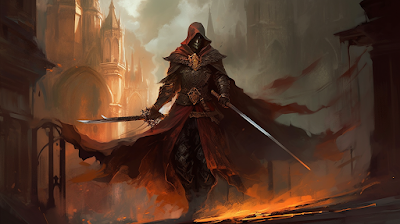
...or Maintaining the Willing Suspension of Disbelief
If you intend to write any kind of fantasy, you have tobecome adept at worldbuilding. Even if your story takes place in a real worldsetting (as is the case for most urban fantasy), there is still the matter ofwhat inhabits that world. The real world doesn’t include monsters, vampires,werewolves, demons, angels, dragons, trolls, elves, faeries, and all matter ofother supernatural creatures, meaning it is up to the author to establish the rulesfor their existence. You need to be clear about how and why they populate yourworld. Are they shadow beings existing on the fringes of an otherwise normal society,or are they common knowledge? And if their existence is accepted in the realworld, how did that come to be? Was it always so, or did a specific eventreveal their existence to the masses? These are matters the author must decide beforewriting one word of the story if it’s going to be taken seriously by readers.You can ask a lot of a reader, but you won’t be forgiven if you continuously breakyour own rules or fail to establish them in the first place. Even fantasy hasstructure.
If your fantasy includes a physical location that doesn’t existin the real world (a country, a world, a city), your worldbuilding becomes even more important. Manyfantasy writers swear by maps (and some even include them in their books) togive them the lay of the land so they can write to that world. I know in mySacrifice series, my characters live in the fantasy city of Erebus. I have arough map I use to describe areas of the city and I’ve written an extensivedescription of it for my own use, so I know where the characters are going andwhat they might find when they get there. After five books, the city has becomeas familiar to me as if it was real, which helps me make it believable to the reader.And that’s just urban fantasy, which by its very definition is supposed to befantastical events in a real world urban setting.
For an epic fantasy writer, the task is even greaterbecause nearly every aspect of the story involves a world unlike our own. Youhave to establish the where, when, and how of the tale, along with theparameters of that society, the geographical details of the land or city, andwhat type of creatures inhabit that world. Maybe your main characters aren’t evenhuman, so what are they? And what are the rules of their existence? You have toset those rules for everything if you’re going to be taken seriously. Unlessyou’re writing absurdist comedy, you can’t have a bustling modern city suddenlyoverrun with dragons if they’ve never been established as existing in thatworld previously just because you think it would be a cool plot twist. Yourwilling suspension of disbelief will go right out the window, and that’s whatultimately all writers strive for. We writers want to take the reader for aride, to make them forget their world for a while and delve into ours.
How adept you are at building out your world will go a longway toward your goal of writing a successful fantasy story. Taking the readerfor that ride is the definition of willing suspension of disbelief. For a littlewhile they become engaged in the worlds we create, and the more convincing yourworldbuilding is, the more willing they are to escape to it. The minute youjerk them out of that world by blatantly ignoring your own rules, or failing toestablish them in the first place, you’ve lost their trust and failed in yourgoal.
But when it works, when you as a writer can create a richand plausible world so unlike that in which we live but still believable enoughto transport the reader beyond his or her everyday life, that is the ultimate rewardfor all your hard work.
September 27, 2023
ENDURE Published
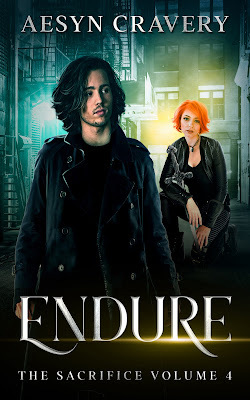
ENDURE, Book 4 of The Sacrifice, is now available on Amazon!
What do a rogue sorcerer, an Unseelie elf, and a gang ofruthless South American mercenaries have in common? They’re all ready to killto claim an ancient artifact that can make them invincible.
When an incubus asks for his help locating a missingroommate, Laec Matthews doesn’t suspect he’s walking into the middle of a plotfor world domination. The players are known. The prize is known. What hedoesn’t know is why such an unlikely crew would be working together, and who dothey ultimately serve? It’s a riddle that leads to an ill-fated road trip, anencounter with a mysterious doppelganger, and a visit to a dangerous library.The only constant is that everywhere he turns, someone is trying to kill him,but there’s more at stake here than just his life.
Can he put the pieces together before humanity pays theprice for his failure?
Buy now on Amazon for Kindle and paperback. Read for free on Kindle Unlimited.
July 5, 2023
Why I Write Urban Fantasy

While cruising around social media lately I’ve seen thisquestion come up a few times: Why do you write in the genre you do?
Why indeed? Urban fantasy is a relatively new genre, just becomingpopular in the past couple of decades. The definition is basically this: magicaland supernatural characters and events based in a gritty, (mostly) urban modern dayenvironment.
Growing up I was fascinated by the paranormal and the occult.The more fantastical it was, the more I devoured it. Monsters and vampires and ghostsand witches and werewolves didn’t scare me. I was more afraid of the thingsthat could come at you in real life, like rapists and serial killers (thoughzombies are still my trigger fear). So I read everything I could get my handson in the genre that was then mainly classified as horror. When I couldn’t findthe stories I wanted to read, I made them up and wrote them down. Thus began mywriting career.
Vampire stories were my favorite–I read everything I couldfind. I didn’t like Dracula; he was too, well, moldy. I liked my vampires upand living in the real world, interacting with humans, and not always thevillain. I can’t remember all the authors I read, but their stories left theirmark on me. And one book in particular had a profound effect, from a littleknown writer at the time, Interview With A Vampire. Anne Rice’s vampires were arevelation. Finally, here were vampires who weren’t the villains, they were theprotagonists. The Vampire Lestat is still to this day one of my favorite books.I’ve worn out two paperback copies of it and have it on my kindle, and I stillreturn to it when I need inspiration or just that comfort read. I may knowpractically every line in it, but it still entertains me.
I believe Anne Rice ushered in the birth of urban fantasy.Yeah, there were others before her, but she brought it into the light ofmainstream fiction. There have been others since that have fed my love of thisgenre and have influenced my own writing, like Jim Butcher, Tanya Huff, ElaineBergstrom, Kate Griffin, and perhaps my current favorite, Rob Thurman (though Ican’t forgive her for leaving her readers in the lurch on a cliffhanger in the CalLeandros series). These authors and many more feed my imagination and make me abetter writer for it. I really do read heavily in the genre I write, and amconstantly looking for new voices to devour.
So why do I write in my chosen genre? Because to me it bestrepresents the fodder of my imagination. Stories about real life leave me cold.I have to live real life; when I read (and write), I want to escape it. So I goto my happy place. Urban Fantasy. To me, it’s the best of bothworlds.
June 9, 2023
New Page - The Sacrifice

I created a new page, The Sacrifice as a companion to the urban fantasy series. Here you'll find background on the city of Erebus and all the main characters who inhabit the pages of the books. I'll add to it as new characters are introduced.



